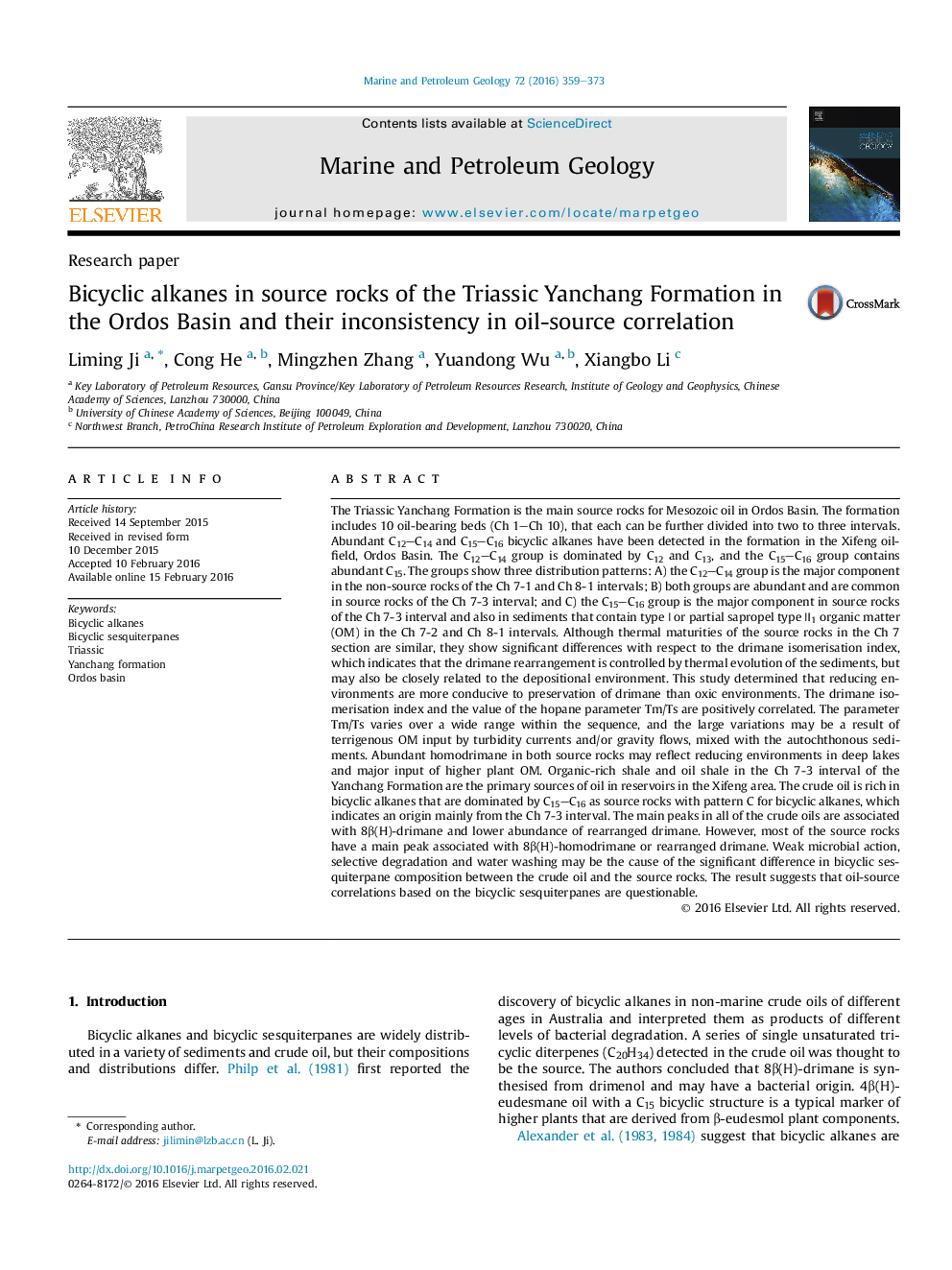| کد مقاله | کد نشریه | سال انتشار | مقاله انگلیسی | نسخه تمام متن |
|---|---|---|---|---|
| 6434509 | 1637155 | 2016 | 15 صفحه PDF | دانلود رایگان |
- Abundant bicyclic alkanes were detected in Yanchang Formation, Ordos Basin.
- Drimane rearrangement may be closely related to depositional environment.
- Abundant homodrimane may reflect reducing environments and higher plant OM inputs.
- Oil-source correlation based on abundance of bicyclic sesquiterpenoids is unreliable.
The Triassic Yanchang Formation is the main source rocks for Mesozoic oil in Ordos Basin. The formation includes 10 oil-bearing beds (Ch 1-Ch 10), that each can be further divided into two to three intervals. Abundant C12-C14 and C15-C16 bicyclic alkanes have been detected in the formation in the Xifeng oilfield, Ordos Basin. The C12-C14 group is dominated by C12 and C13, and the C15-C16 group contains abundant C15. The groups show three distribution patterns: A) the C12-C14 group is the major component in the non-source rocks of the Ch 7-1 and Ch 8-1 intervals; B) both groups are abundant and are common in source rocks of the Ch 7-3 interval; and C) the C15-C16 group is the major component in source rocks of the Ch 7-3 interval and also in sediments that contain type â or partial sapropel type â ¡1 organic matter (OM) in the Ch 7-2 and Ch 8-1 intervals. Although thermal maturities of the source rocks in the Ch 7 section are similar, they show significant differences with respect to the drimane isomerisation index, which indicates that the drimane rearrangement is controlled by thermal evolution of the sediments, but may also be closely related to the depositional environment. This study determined that reducing environments are more conducive to preservation of drimane than oxic environments. The drimane isomerisation index and the value of the hopane parameter Tm/Ts are positively correlated. The parameter Tm/Ts varies over a wide range within the sequence, and the large variations may be a result of terrigenous OM input by turbidity currents and/or gravity flows, mixed with the autochthonous sediments. Abundant homodrimane in both source rocks may reflect reducing environments in deep lakes and major input of higher plant OM. Organic-rich shale and oil shale in the Ch 7-3 interval of the Yanchang Formation are the primary sources of oil in reservoirs in the Xifeng area. The crude oil is rich in bicyclic alkanes that are dominated by C15-C16 as source rocks with pattern C for bicyclic alkanes, which indicates an origin mainly from the Ch 7-3 interval. The main peaks in all of the crude oils are associated with 8β(H)-drimane and lower abundance of rearranged drimane. However, most of the source rocks have a main peak associated with 8β(H)-homodrimane or rearranged drimane. Weak microbial action, selective degradation and water washing may be the cause of the significant difference in bicyclic sesquiterpane composition between the crude oil and the source rocks. The result suggests that oil-source correlations based on the bicyclic sesquiterpanes are questionable.
107
Journal: Marine and Petroleum Geology - Volume 72, April 2016, Pages 359-373
